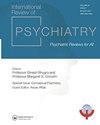通过摄影肖像探索精神病学、艺术和医学教育的交叉点
IF 3.7
4区 医学
Q1 PSYCHIATRY
引用次数: 0
摘要
摘要本文描述了在医学教育中运用肖像摄影的方法,以鼓励近距离观察,培养移情好奇心,探索学习者的价值观和信仰,揭示和反思基本偏见。这种新的和不断发展的教育方法使用心理治疗的镜头来探索学习者对肖像的体验,其方式与我们讨论心理动力学监督案例的方式类似。通过近距离观察和小组参与,促进者创造了一个更深层次的反思和合作探索治疗关系的空间,强调反移情和先前期望的作用。这个练习通过换位思考、挑战隐性假设和培养文化谦逊来加强辩证思维。放射科医生被教导要观察x光片的每个角落,观察每个阴影,同时评估整个图像。肖像也可以用同样的方式来审视,寻找人物性格和历史的微妙线索。来自其他来源的信息证实了我们的评估,有时甚至深刻地改变了我们的评估。在这个例子中,我们使用历史摄影肖像来展示吸引医学学习者的方法,因为他们发现了常见的心理治疗方法。该方法具有增强治疗体验、提高分析技能和减少偏见的潜力。关键词:医学教育中的精神艺术医学教育中的视觉艺术与医学共情医学教育中的反移情医学教育中的人文主义医学教育中的情感认知医学教育中的文化谦逊精神教育中的辩证思维医学学习者的观察技巧披露声明作者未报告潜在的利益冲突。本文章由计算机程序翻译,如有差异,请以英文原文为准。
Exploring the intersection of psychiatry, art, and medical education through photographic portraits
AbstractThis paper describes a technique using photographic portraits in medical education to encourage close observation, cultivate empathic curiosity, explore learners’ values and beliefs, and to reveal and reflect on fundamental biases. This new and evolving educational method uses the lens of psychotherapy to explore learners’ experience of the portrait in a similar way we would discuss a case in psychodynamic supervision. Through close looking and small group engagement, the facilitator creates a space for deeper reflection and collaborative exploration of the therapeutic relationship, with emphasis on countertransference and the role of prior expectations. The exercise strengthens dialectical thinking through perspective-taking, challenging implicit assumptions and fostering cultural humility. Radiologists are taught to look in every corner of the X-ray and to observe each shadow, all while evaluating the entire image. Portraits can be examined in the same way, looking for subtle clues to the personality and history of the subject. Information from other sources confirms, or sometimes profoundly changes, our evaluation. In this example, we use a historical photographic portrait to demonstrate ways of engaging medical learners as they discover common psychotherapeutic approaches. The method has the potential to enhance therapeutic encounters, improve analytical skills and reduce bias.Keywords: Psychiatryart in medical educationvisual arts and medicineempathy in medical educationcountertransference in medical educationhumanism in healthcareemotional recognition in medical learnerscultural humility in medical educationdialectical thinking in psychiatry educationobservational skills in medical learners Disclosure statementNo potential conflict of interest was reported by the author(s).
求助全文
通过发布文献求助,成功后即可免费获取论文全文。
去求助
来源期刊

International Review of Psychiatry
PSYCHIATRY-
CiteScore
5.10
自引率
0.00%
发文量
85
期刊介绍:
The International Review of Psychiatry is the premier review journal in the field with a truly international authorship and readership. Each bimonthly issue is dedicated to a specific theme relevant to psychiatry, edited by recognized experts on the topic, who are selected by the Editors and the Editorial Board. Each issue provides in-depth, scholarly reviews of the topic in focus. The Journal reaches a broad international readership including clinicians, academics, educators, and researchers who wish to remain up-to-date with recent and rapid developments in various fields of psychiatry. It aims to be of value to trainees by choosing topics of relevance to career development, which are also suitable for clinicians for continuing professional development.
 求助内容:
求助内容: 应助结果提醒方式:
应助结果提醒方式:


